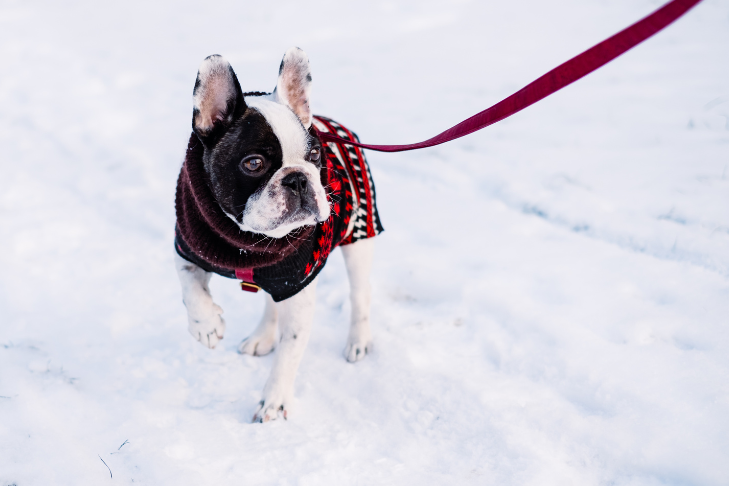Is It Too Cold to Walk My Dog? Vet-Approved Temperature Tips

When the weather turns chilly, your dog may still be eager to head outside, but not every cold day is ideal for a long walk. As temperatures drop, it’s important to understand how the cold affects your dog’s comfort, joints, and skin. Just like humans, dogs have different levels of tolerance based on their size, coat type, and age. Knowing when it’s too cold (and how to prepare) can help you keep every winter walk safe and enjoyable.
How Cold Is Too Cold for Dogs?
Each dog handles cold differently, but there are general temperature ranges to keep in mind. Most dogs are comfortable above 45°F, though smaller or short-haired breeds may start feeling chilly once temperatures dip below that. Between 32°F and 20°F, shorter walks are best, especially for puppies, seniors, or dogs with thin coats. Once the thermometer drops below 20°F, it’s best to keep outdoor time very brief.
If your dog begins lifting their paws, shivering, or showing signs of slowing down, it’s time to head inside. Always trust your instincts. If it feels too cold for you, it’s likely too cold for your dog too.
Factors That Affect Cold Tolerance
Not all dogs experience cold the same way. A few factors can make a big difference:
- Breed and coat type: Double-coated breeds like Huskies or Malamutes naturally tolerate colder weather better than short-haired dogs like Greyhounds or Boxers.
- Age and health: Puppies and senior dogs are more sensitive to temperature changes.
- Body size: Smaller dogs lose heat faster than larger breeds.
- Activity level: A brisk walk helps keep your dog’s blood flowing and body warm, while slower strolls might leave them feeling the chill sooner.
Understanding these factors can help you tailor your winter walks to your dog’s unique needs.
How to Tell If It’s Too Cold for a Walk
Even if temperatures seem mild, wind and moisture can make the cold feel sharper. Watch for signs like shivering, whining, holding up paws, or seeking shelter. Dogs that are uncomfortable may also try to turn back toward home. When you notice these cues, shorten your walk or take a break indoors to warm up.
Cold Weather Care for Paws and Skin
Snow, ice, and road salt can be harsh on a dog’s paws and skin. After every walk, gently wipe your dog’s paws to remove debris or salt that could cause irritation. Applying a protective topical before and after outdoor time can help keep paw pads soft and healthy through winter’s dry, cold air.
Pet Releaf’s Skin & Paw Releaf Topical is made with natural, plant-based ingredients that nourish and protect your dog’s skin. It helps maintain moisture and comfort, especially during cold-weather walks when paws and noses are more prone to dryness or cracking. Adding this simple step to your winter routine can go a long way in keeping your dog’s skin and paws healthy all season long.

Tips for Safe and Enjoyable Winter Walks
A few small adjustments can make cold-weather walks more comfortable for your dog:
- Dress small or short-haired dogs in a well-fitted sweater or coat.
- Limit outdoor time during freezing temperatures.
- Choose routes with less snow or salt when possible.
- Bring a towel to dry paws and fur afterward.
- Keep walks consistent but shorter to maintain routine without overexposure to the cold.
When It’s Best to Stay Indoors
On days when temperatures plunge below freezing or wind chills are severe, skip the long outdoor strolls. Indoor enrichment activities like puzzle toys, scent games, or short play sessions can help burn energy safely.
Supporting Your Dog’s Comfort Year-Round
Cold weather doesn’t have to mean skipping exercise altogether, it just means adjusting to keep your dog comfortable. Pay attention to how your dog responds to temperature changes, keep walks short when needed, and focus on paw and skin care during the winter months. By combining a thoughtful routine with gentle wellness support, you’ll help your dog stay happy, healthy, and ready for adventure no matter how cold it gets outside.


